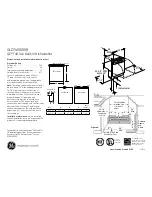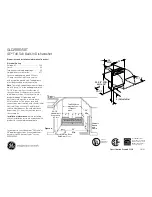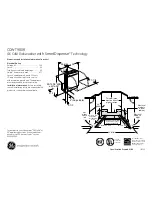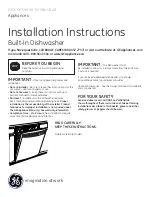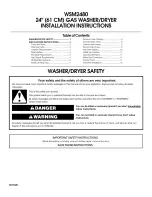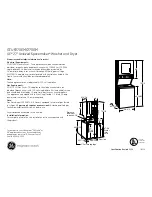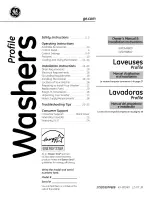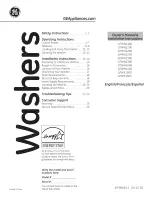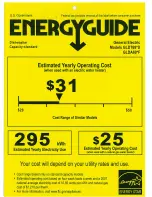
en-us
Detergent
24
Detergent
12 Detergent
Detergent
Find out which detergents are suitable for your appliance.
12.1 The correct detergents
Only use detergents that are made for dishwashers, either
basic or combination detergents.
For the best washing and drying results, use a separate
detergent, then add Special salt and Rinse aid
separately.
Modern, powerful detergents mainly use a low-alkaline for-
mulation with enzymes. Enzymes break down starch and
remove protein. Oxygen-based bleaching agents are gen-
erally used to remove colored stains, e.g. tea or ketchup.
Note:
Follow the manufacturer's instructions for each de-
tergent.
Detergent
Description
Tabs
Tabs are perfect for all cleaning
functions and do not need to be
measured out.
dissolve entirely and leave residues
of detergent. This may reduce its ef-
fectiveness.
Powder detergent
Powder detergent is recommended
for shorter cycles. The dosage can
be adjusted to the level of soiling.
Liquid detergent
Liquid detergent works faster and is
recommended for shorter cycles
without a pre-rinse.
Sometimes liquid detergent may
leak out despite the detergent dis-
penser being closed. This is not a
problem, just remember the follow-
ing:
¡
Only choose a cycle without Pre-
Rinse.
¡
Do not use the Delay Start option.
The dosage can be adjusted to the
level of soiling.
12.2 Incompatible detergents
Do not use a detergent which is not designated for dish-
washer use or contains chlorine.
Detergent
Description
Liquid hand soap
Liquid hand soap can
cause increased frothing
and damage the appliance.
Detergent containing chlo-
rine
This may leave chlorine
residue on dishware.
12.3 Information on Detergent
Follow the instructions on detergents in everyday use.
¡
Detergents marked as "ecological" (environmentally
friendly) generally contain lower levels of active agents
or none at all. The cleaning effect may be reduced.
¡
Adjust the rinse aid and the water softening system set-
tings in accordance with the detergent or combination
detergent in use.
¡
According to manufacturers, combination detergents
with salt replacement substances can only be used up
to a certain water hardness, usually 26 °E, without
adding special salt. For the best washing and drying re-
sults we recommend using special salt from a water
hardness of 17 °E.
¡
Any rinse aid component of a combination detergent
has limited effectiveness. You will have better results
using a separate rinse aid.
¡
To prevent sticking, only touch detergents in a water-
soluble pouch with dry hands and only ever place them
in a dry detergent dispenser.
¡
Even if the rinse aid and special salt refill indicators light
up, the wash cycles will run properly with combination
detergents.
¡
Use tablets with enhanced drying results.
12.4 Adding Detergent
1.
To open the detergent dispenser, press the locking
latch.
2.
Add the detergent to the dry detergent dispenser.
3 tbsp
(45 ml)
1.75 tbsp
(25 ml)
1 tbsp
(15 ml)
If you are using tablets, one is enough. Insert the tablets
in a horizontal position.
If you are using powder or liquid detergent, follow the
manufacturer's instructions and quantities for dosage in
the detergent dispenser.
1.5 to 1.75 Tbsp (20 ml – 25 ml) detergent is sufficient
for normal soiling. If dishware is only lightly soiled,
slightly less than the amount of detergent specified is
usually sufficient.
Summary of Contents for DF480700
Page 1: ...en us User manual DF480700 Dishwasher Gaggenau...
Page 47: ......
































